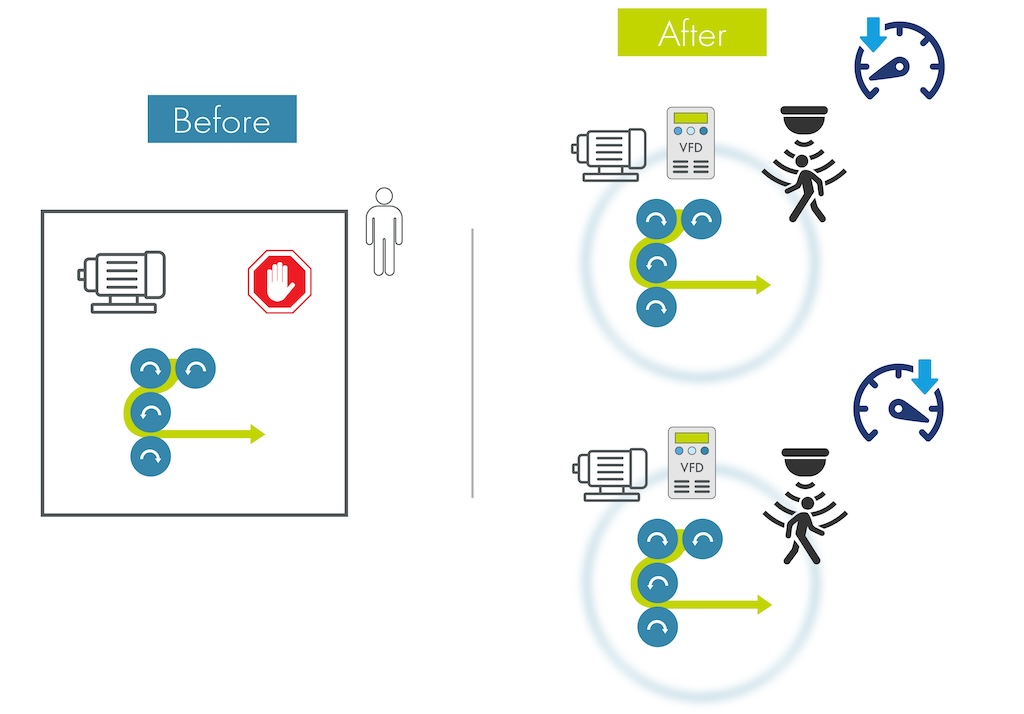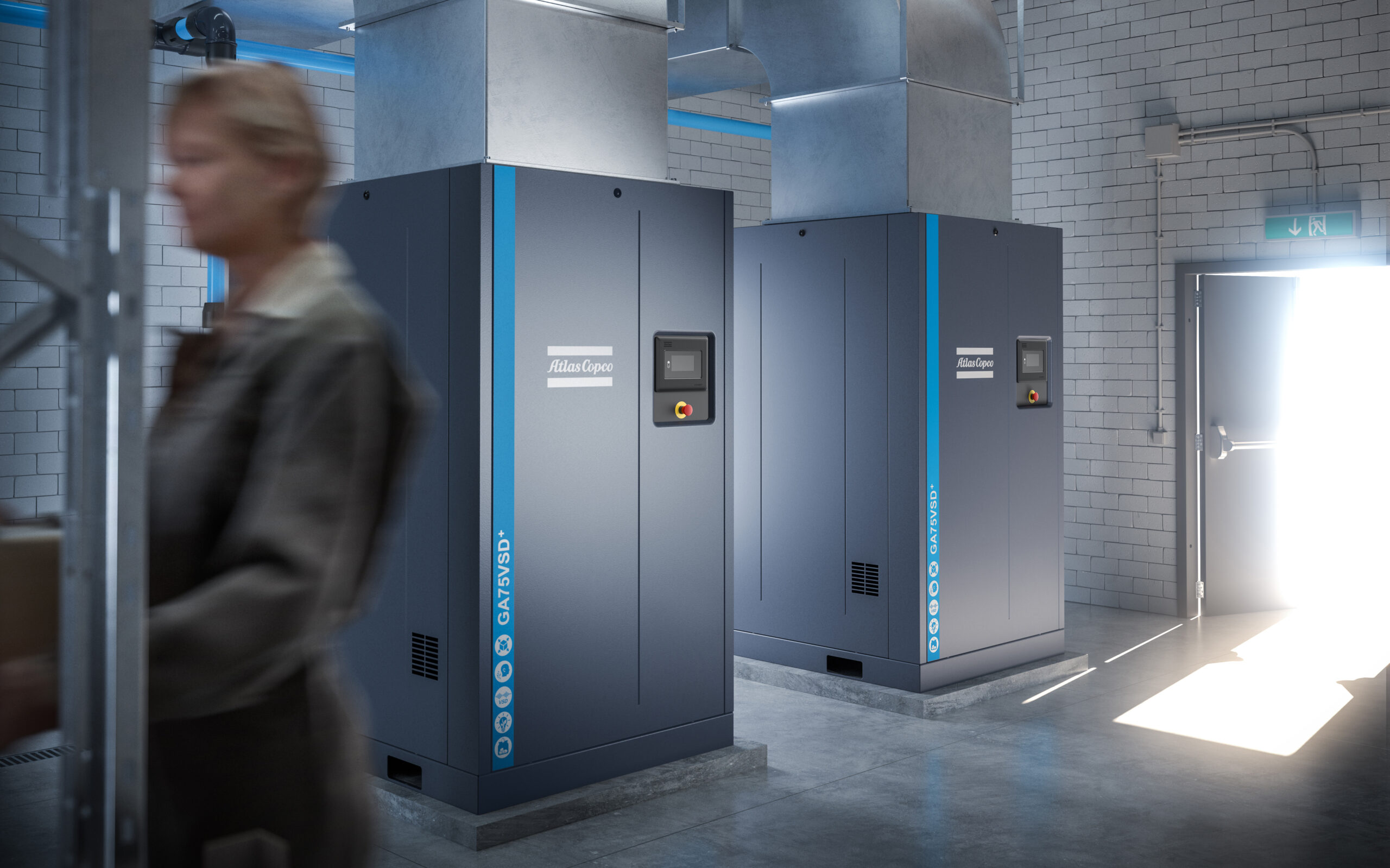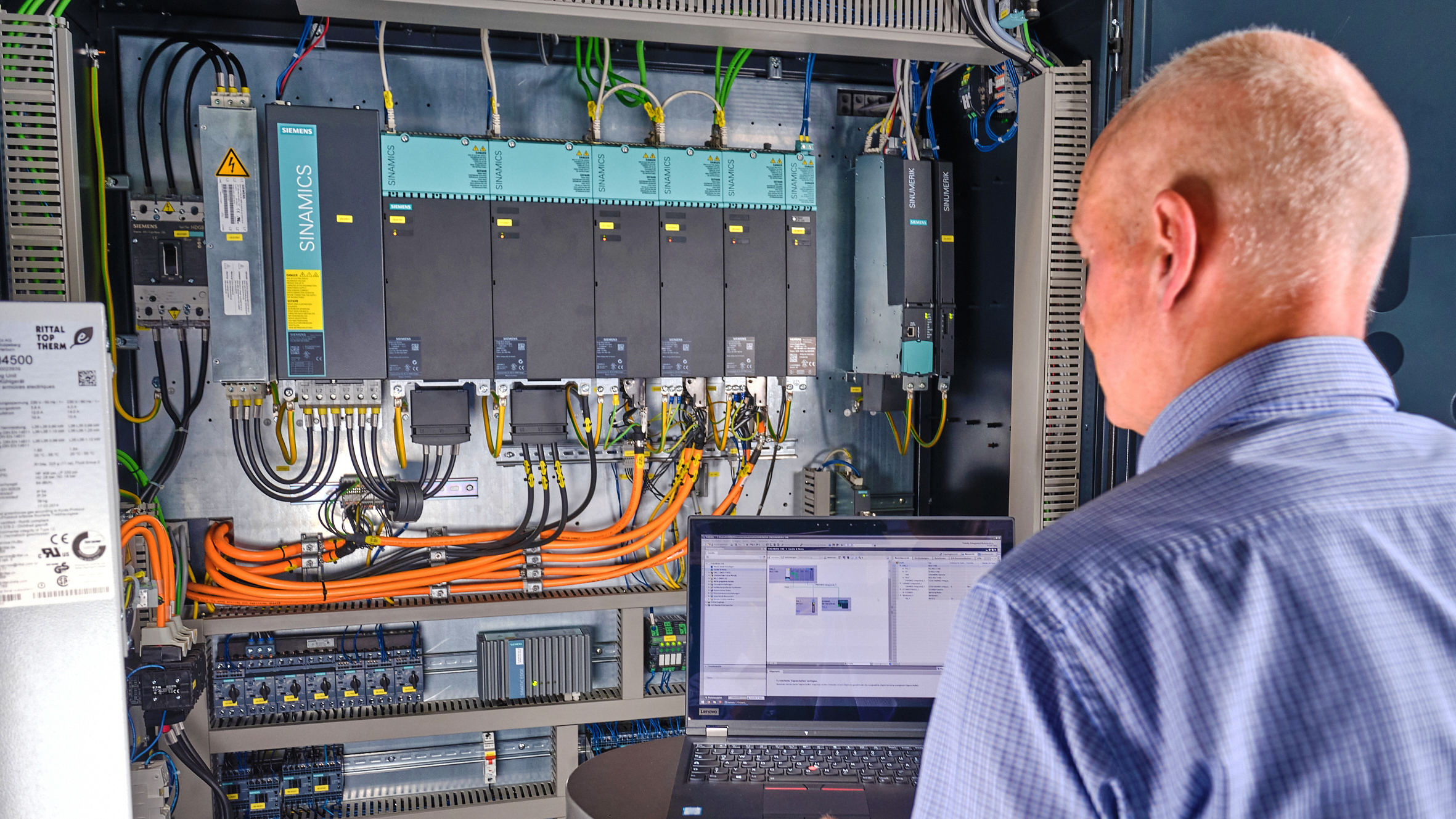Clamp meters are familiar tools for electrical engineers, and technicians — they're the wrench of the trade for electricians. But as electrical system loads become more complex, you should make sure your clamp meters are keeping pace. The two types of clamp meters in use today are average responding and true-RMS sensing.
Key Concepts
The best clamp meter for all plant applications is one that measures true RMS.
The possibility of transient overvoltage increases as distribution systems and loads become more complex.
The min/max feature is useful in troubleshooting nuisance trips on breakers that reset mysteriously.
Sections: Min/max Frequency Inrush current Transient overvoltage
Sidebars: Working safely But what does true RMS really mean? Explanation of IEC category ratings How to select a clamp meter
Clamp meters are familiar tools for electrical engineers, and technicians — they’re the wrench of the trade for electricians. But as electrical system loads become more complex, you should make sure your clamp meters are keeping pace.
The two types of clamp meters in use today are average responding and true-RMS sensing. The difference between the two is measurement accuracy of nonlinear loads. While average-responding clamp meters are widely used and are usually lower in cost, they give correct readings for linear electrical loads only. Linear loads include standard induction motors, resistance heaters, and incandescent lights. This type of load typically is associated with residential electrical systems.
Examples of nonlinear loads include equipment that contains semiconductors, such as industrial automation controls, personal computers, photocopiers, energy-efficient lighting, commercial air conditioning units, and adjustable speed drives. When loads are nonlinear, typical average-responding meters read low — with as much as 40% error. This much error can result in a measurement that appears to indicate a properly operating system, while in reality there could be dangerous overheating taking place.
For this reason, the best possible clamp meter for all plant applications is one that measures true RMS (see sidebar titled “But what does true RMS really mean?”). The newest generation of clamp meters has other valuable new functions as well (Fig. 1). These include the ability to make min/max, frequency, and true inrush current measurements.
Before attempting to make electrical measurements or service electrical equipment, ensure you are working safely. Refer to applicable manuals and heed equipment warnings (see sidebar titled “Working safely”).
Min/max
Min/max is a function typically offered in a digital multimeter (DMM). But it’s also useful in a clamp meter for measuring load variations. Min/max allows you to measure voltage and current extremes over a period of time without having to monitor the meter closely to record the readings yourself. This function is particularly useful in troubleshooting programmable logic controllers (PLCs) or nuisance trips on breakers that reset mysteriously.
To make a min/max measurement, place the jaws of the clamp meter around the cable, press the min/max button on the clamp meter, and leave it for a period long enough to measure the event that you suspect is causing the problem. The display will give you the minimum and maximum readings taken during that period.
Frequency
High-end clamp meters also have the ability to measure frequency on variable speed drives and many other types of equipment. An advanced clamp meter provides a better frequency reading than a digital multimeter because its filters allow it to reject the high-frequency components of the pulse-width modulation (PWM) waveform inherent to drives.
To make frequency measurements on a 3-phase motor connected to a variable speed drive, first check the output frequency indicated on the drive’s display. Then set the clamp meter to frequency mode by pressing the button or turning the selector switch to a position labeled “Hz” on most clamp meters. Place the clamp around one of the phase conductors between drive and motor; the meter accurately displays the frequency.
Inrush current
It is estimated that more than 78% of the electricity consumed by U.S. industry is used to power electric motors. With the cost of energy on the rise, there is increased urgency to install high-efficiency motors in plants.
While high-efficiency motors consume less electricity than their older, less efficient counterparts, they are more likely to trip the circuit protector when started. The initial startup current, or inrush current, causes the trips. Inrush current can be several times greater than the operating, or steady-state current. For example, in a 3-phase motor, inrush current generally lasts between 75 and 150 msec with a current spike between 500% and 1200% of normal levels. Although short lived, this surge can create problems.
Among the most annoying problems is a nuisance trip of the circuit protector. If the protector is not sized to handle the amount of inrush current that could occur, the device can trip upon energizing the circuit or during circuit operation.
Excessive inrush current may also shorten the life of switches and circuit protectors. Switches are most susceptible since the current spike occurs as the contacts are closed, causing the contacts to become pitted. In severe cases, excess current can weld switch contacts together.
Because of this, precise measurement of inrush current is more than just a convenience — it’s a critical element of motor installation and maintenance. Some of the latest clamp meters have the ability to accurately measure inrush current with the touch of a button. They use high-speed, digital signal processing to filter out electronic noise and capture the starting, or inrush, current as the circuit protector sees it.
To make an inrush measurement, first “arm” the inrush function of the clamp meter by pressing the inrush button with the clamp hooked around the conductor. Activate the load and the measurement will be triggered by the inrush current. Once triggered, the meter takes a large number of samples during a 100-msec period. The clamp meter digitally filters and processes these samples to calculate the actual starting current. The result is a highly accurate, synchronous indication of the start current.
Transient overvoltage
As distribution systems and loads become more complex, the possibility of transient overvoltage increases. Motors, capacitors, and power conversion equipment, such as variable speed drives, can be significant generators of spikes. Lightning strikes on outdoor transmission lines also cause extremely hazardous high-energy transients.
When taking measurements on electrical systems, these transients are “invisible” and largely unavoidable hazards. They occur regularly on low-voltage power circuits, and can reach peak values in the many thousands of volts. In these cases, the user’s protection depends on the safety margin built into the meter. The voltage rating alone will not indicate how well that meter was designed to survive these high-voltage transients.
The International Electrotechnical Commission (IEC) has developed a safety standard for electrical measurement equipment titled IEC 61010-1. This safety standard emphasizes protection against the increasing danger of high-voltage transients. In a plant environment, it’s critical to use a meter that is designed to meet this standard and is marked with a relevant category and voltage rating (see sidebar titled “Explanation of IEC category ratings”).
Historically, clamp meters have been an indispensable tool in managing electrical loads in plants. But the recent improvements in functionality and form factor have changed these old workhorses into an even more valuable and versatile tool for electrical professionals.
More Info:
If you have questions on clamp meters, contact the author. Steve Clark can be reached at 800-443-5853 or [email protected] . Article edited by Jack Smith, Senior Editor, 630-288-8783, [email protected] .
Working safely
High voltage and current present in electrical systems can cause serious injury or death by electrocution and burns. Only trained, experienced electricians and technicians who have knowledge of electrical systems in general and the equipment under test should perform testing and modification of electrical systems.
When performing measurements, including those described in this article, you should:
Use appropriate safety equipment such as safety glasses, insulation gloves, insulating mats, etc.
Ensure that all power has been turned off, locked out, and tagged in any situation where you will be in direct contact with circuit components. Verify that the power can’t be turned on by anyone but you.
Read and understand all the applicable manuals as well as the safety precautions and warnings contained therein.
Do not use instruments in applications for which they are not intended. Always be aware that if the equipment is used in a manner not specified by the manufacturer, the protection provided by the equipment may be impaired.
But what does true RMS really mean?
RMS is an acronym for root-mean-square. It comes from a mathematical formula that calculates the effective value (or heating value) of any ac wave shape. In electrical terms, the ac RMS value is equivalent to the dc heating value of a particular voltage or current waveform. For example, if a resistive heating element in an electric furnace is rated at 15 kW of heat at 240 Vac RMS, it would produce the same amount of heat if 240 Vdc were applied instead of ac.
Electrical power system components such as fuses, bus bars, conductors, and thermal elements of circuit breakers are rated in RMS current because the primary determining factor of each depends on heat dissipation.
To check an electrical circuit for overloading, measure the RMS current and compare the measured value to the rated value for the component in question. If a current clamp is labeled and specified to respond to the true-RMS value of current, it means that the clamp’s internal circuit calculates the heating value according to the RMS formula. This method will give the correct heating value regardless of the shape of the current waveform.
Some low-cost current clamps that don’t have true-RMS circuitry use a shortcut method to find the RMS value. These meters are specified to be average-responding RMS-indicating. They capture the rectified average of an ac waveform and scale the number by 1.1 to calculate the RMS value. In other words, the value they display is not a true value, but rather is a calculated value based on an assumption about the wave shape.
The average responding method is accurate for pure sine waves only. Using an average-responding meter can lead to reading errors of up to 40% when a waveform is distorted by nonlinear loads such as adjustable-speed drives, computers, or other equipment that employs semiconductors.
Current clamps come in two physical styles. The most common type is the integral clamp, which has the jaws, readout, and measuring circuit built into a stand-alone unit. Look for “True RMS” on the front panel.
The second style consists of a current transformer (CT)-type accessory, which works with a digital multimeter (DMM). The jaws of the clamp enclose the conductor being measured, which acts as a transformer primary of one turn. The secondary coil has 1000 turns, which divides the measured current by 1000. In other words, the measured current is converted from A to mA. When the clamp’s output leads are plugged into the DMM’s ac mA jacks, the DMM displays the correct reading.
Explanation of IEC category ratings
IEC category ratings are arranged according to voltage and location. Examples of equipment types and locations are listed with the associated category as shown in the drawing:
CAT I— Electronic
Protected electronic equipment
Equipment connected to (source) circuits in which measures are taken to limit transient overvoltage to an appropriately low level
Any high-voltage, low-energy source derived from a high winding-resistance transformer, such as the high-voltage section of a copier.
Low-voltage (& 1000 V) test equipment.
CAT II— Single-phase, receptacle-connected loads
Appliances, portable tools, and other similar light industrial/household loads
Outlet and long-branch circuits
Outlets at more than 30 ft from CAT III source
Outlets at more that 60 ft from CAT IV source.
CAT III— 3-phase distribution, including single-phase commercial lighting
Equipment in fixed installations, such as switchgear and polyphase motors
Bus and feeder in industrial plants
Feeders and short branch circuits, distribution panel devices
Lighting systems in larger buildings
Appliance/equipment outlets with short connections to service entrance.
CAT IV— 3-phase at utility connection, outdoor conductors
Origin of installation, or where low-voltage connection is made to utility power
Electricity meters, primary overcurrent protection equipment
Outside and service entrance, service drop from pole to building, runs between meter and panel
Overhead line to detached building, underground line to well pump.
How to select a clamp meter
When selecting a clamp meter, start by considering how you will use the instrument. Determine the features you require then compare meters based on those features as well as physical design, safety, and company reputation.
Consider the following when selecting a clamp meter:
Meter use — at the outset, decide where and how you will use the meter. These two factors should drive your purchase decision. Don’t buy more meter than you need, but don’t buy less, either. The difference in price between a meter that meets all your needs vs. one that doesn’t is probably less than you think.
Category and voltage rating — select a meter that has the correct category and voltage rating for your application.
Size — ensure that the meter you buy can fit in all the places you need. The jaws should be small enough to fit in tight places, but still fit around the widest conductor you need to measure.
Backlit screen — if you take electrical measurements in dark places, a meter with a backlit display is more than a luxury.
One-handed operation — determine if it is necessary to use the meter with one hand. If so, ensure it is designed for one-handed operation. Try it before you buy it to verify that its one-handed design actually works in your hand.
Auto-shutoff — increases battery life.
True RMS — when measuring nonlinear loads, average-responding meters can measure as much as 40% in error. For this reason, the best possible clamp meter in a plant setting is one that measures true RMS.
Measurement of ac/dc — when working with fork lifts, backup battery systems, vehicles, electronic equipment, and many other electrical devices found in industry, ensure you have the ability to measure dc as well as ac current.



